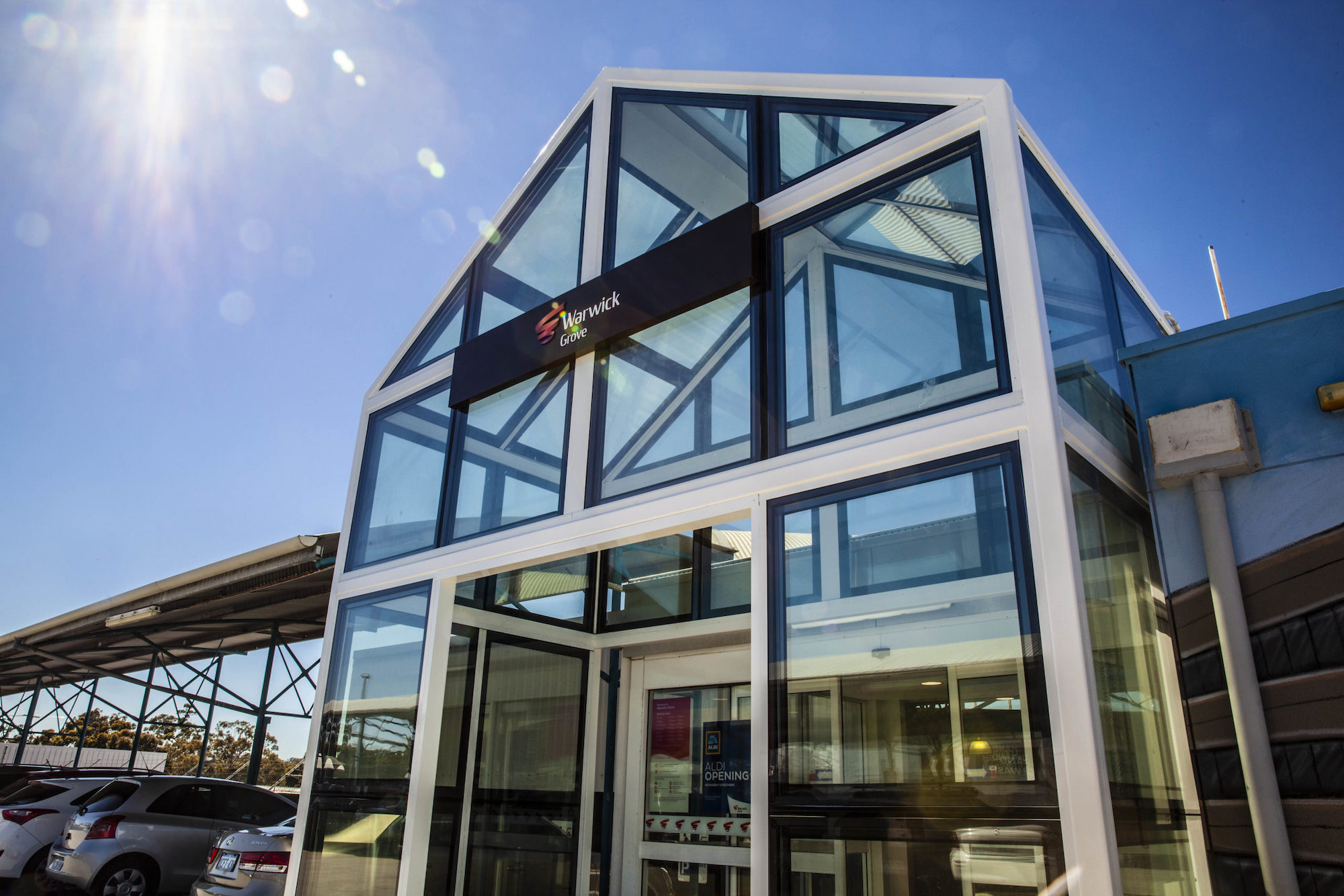
Recently, my colleague David Waterworth wrote about ClearVue, a company located in Perth, Australia, that makes photovoltaic solar windows that look clear from outside. In David’s write-up in June, he quotes Victor Rosenberg, executive chairman of ClearVue, who claims the company’s technology presents a paradigm shift in the way glass will be used in the construction, automobile, and agriculture industries.
“Glass will no longer be just a component of construction but a renewable energy resource,” Rosenberg said. He added that he expects payback periods of less than a year, with a product life of over 30 years. “Energy efficient, energy producing windows that are stunningly clear with no distortion.” Claims are all well and good. Every company wants to hype their products to the skies in hopes of attracting new customers. But where’s the proof that those claims are realistic?
During a 2-year study of ClearVue windows installed in the roof and vertical walls of greenhouse at Murdoch University in Perth, researchers at the school’s Environmental Technology Center, which is part of its School of Science, Technology, Engineering & Mathematics, found ClearVue’s clear solar glazing technology produces consistent energy generation and substantially lowered energy consumption, producing electricity at rates of up to 19 kilowatt-hours per day, offsetting about 40% of energy costs.
These gains are attributed to ClearVue’s pioneering fluorescent particle technologies. The panel’s transparent interlayer is laced with nano and micro particles spreading the solar energy hitting the glass’ surface in the direction of the solar cells located at the boundaries of the insulated glass units (IGUs), allowing solar energy to be harvested despite the sun not shining directly on the IGU.

As a reference, the researchers compared the performance of the ClearVue solar glass with a conventional rooftop solar systems located nearby. They found that while conventional rooftop solar panels outperformed clear solar glazing in perfect conditions, the clear solar panels performed better in adverse conditions, like rainy days. The windows, which are installed vertically and on the building’s rooftop, allowed for the capture of sunlight from a variety of angles compared to rooftop panels, according to Australia’s Property Tribune.
“Solar glazing solutions have been talked about for years, yet until now, commercially available clear vision solar glass designed for commercial building facades has not been put to the test in a real world environment for extended study,” says Clifton Smythe, ClearVue’s chief business development officer.
“The only long term installation of its kind has shown that solar energy harvesting with ClearVue solar glazing solutions is not only feasible on vertical surfaces, but effective throughout all seasons. Each installation is unique, so results will vary depending on how demanding energy use is for any given building, and where and how the solar glazing is installed on a building.”
The study was published July 12, 2023 in the journal MPDI. In the concluding paragraphs, the researchers wrote:
“Novel high transparency solar PV windows of several different design configurations were deployed over a greenhouse building envelope and field tested to investigate their energy harvesting trends and performance potential. Window integrated PV was designed to employ 3D-structured custom shaped PV modules placed around window perimeter areas, also containing embedded glass-based luminescent solar concentrator panels and spectrally selective optical coatings.
“The energy harvesting behavior characteristics were demonstrated to be different from those usually seen in conventional photovoltaics, with some window designs showing strong performance in terms of power generation and energy production outputs throughout seasons, including in adverse weather conditions. We found that double interlayer solar window designs provided more stable energy harvesting outputs, compared to single interlayer windows of reduced haze and concentration-thickness product of the luminescent materials embedded within polyvinyl butyral.
“Even though more studies will be necessary to further optimize solar window designs in terms of energy yields, the current-generation high-transparency ClearVue solar windows have demonstrated a significant (~40%) reduction in the solar greenhouse energy use intensity, compared to a conventionally glazed alternative. New methods suitable for the identification and quantification of design-dependent field performance differences in solar PV windows have been reported. Innovative high-transparency agrivoltaic construction materials have been shown to reduce running costs in a research greenhouse environment built in a moderate climate.
“ClearVue solar windows installation showed rather stable daily energy harvest and small long-term reductions in the energy outputs over multiple months since installation in April 2021.”
ClearVue windows were found to transmit about 70% of available sunlight, which is similar to the amount transmitted by conventional windows. This helps the appearance of a building fitted with look virtually the same, even though its windows are also being used to generate electricity. That could make ClearVue windows appropriate for use in historic areas where the appearance of the exterior of buildings is an important consideration.
Ultimately, fitting ClearVue photovoltaic glass can help lower the energy needs of a building. Less electricity imported from the local energy grid means lower utility bills and lower total building emissions. The Murdoch University study demonstrated the unique attributes of the ClearVue photovoltaic windows in agricultural applications.
The company’s technology allows the spectrum of sunlight essential to photosynthesis in plants to pass through largely unimpeded. The photovoltaic function of the windows is tailored to rely on wavelengths that are not critical to growing crops. “Infrared and ultraviolet rays are filtered using a spectrally selective film and dispersed towards solar cells by a nanoparticle PVB interlayer,” the company says.

ClearView Smart Facade System
ClearVue is about more than just photovoltaic windows. It has crafted a complete smart building facade system that allows complete control over how much daylight enters each room, based on the preferences of those using the interior space. Digital controls interface with Google and Apple apps to create occupant comfort control solutions linked to a building’s management system.
ClearVue’s technology creates smart, green infrastructure with the ability to integrate IoT connectivity and intelligence into the built environment, from high rise building facades to greenhouses. Imagine the possibilities, the company says on its website.
The Takeaway
With financial assistance from the Western Australia government, ClearVue is now finalizing its supply chain and setting up advanced photovoltaic and nanoparticle components manufacturing facility for commercial production of its photovoltaic windows in Perth.
With the results of a peer reviewed research project showing that ClearVue windows can offset up to 40% of a building’s electrical energy needs — enough to recoup the cost of the photovoltaics in about a year — the company expects strong demand for its products.
There is no word on when the company expects to expand into exporting its windows to markets outside Australia, but as the word filters throughout the architectural and building trades communities, it can anticipate plenty of interest from all around the world.
I don’t like paywalls. You don’t like paywalls. Who likes paywalls? Here at CleanTechnica, we implemented a limited paywall for a while, but it always felt wrong — and it was always tough to decide what we should put behind there. In theory, your most exclusive and best content goes behind a paywall. But then fewer people read it! We just don’t like paywalls, and so we’ve decided to ditch ours. Unfortunately, the media business is still a tough, cut-throat business with tiny margins. It’s a never-ending Olympic challenge to stay above water or even perhaps — gasp — grow. So …




